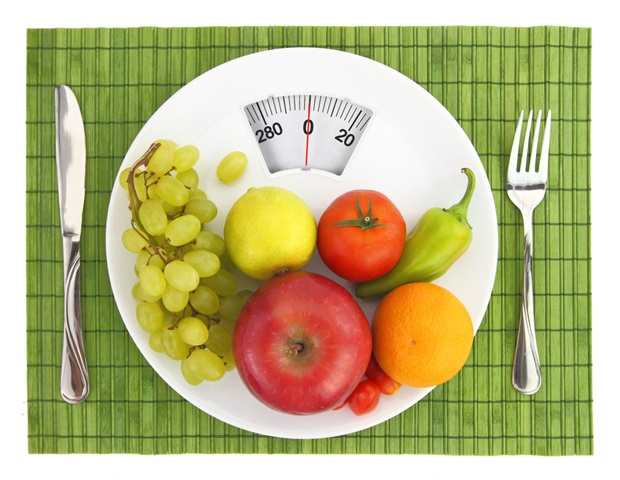A new study demonstrates that eating primarily minimally processed foods, as they are defined by the NOVA classification system, does not automatically make for a healthy diet, suggesting that the types of foods we eat may matter more than the level of processing used to make them.
Comparing two menus reflecting a typical Western diet -; one emphasizing minimally processed foods and the other emphasizing ultra-processed foods, as categorized by the NOVA classification system -; the researchers found that the less processed menu was more than twice as expensive and reached its expiration date over three times faster without delivering any additional nutritional value.
“This study indicates that it is possible to eat a low-quality diet even when choosing mostly minimally processed foods,” said Julie Hess, PhD, a research nutritionist at the USDA-ARS Grand Forks Human Nutrition Research Center, who led the study. “It also shows that more-processed and less-processed diets can be equally nutritious (or non-nutritious), but the more-processed diet may have a longer shelf life and be less costly.”
Mark Messina, PhD, director of nutrition science and research at Soy Nutrition Institute Global, will present the findings at NUTRITION 2024, the flagship annual meeting of the American Society for Nutrition held June 29–July 2 in Chicago.
The new research builds on a study the team published last year, which demonstrated that it was possible to build a high-quality menu that aligns with dietary guidelines while deriving most of its calories from foods classified as ultra-processed. For the new study, the researchers asked the opposite question: Is it possible to build a low-quality menu that derives most of its calories from “simple” foods?
To find out, they constructed a less-processed menu, which derived 20% of its calories from ultra-processed foods, and a more-processed menu, which derived 67% of its calories from ultra-processed foods. The level of processing involved in each menu was determined according to the NOVA system of classification.
The two menus were calculated to have a Healthy Eating Index score of about 43-44 out of 100, a relatively low score that reflects poor adherence to the Dietary Guidelines for Americans. The researchers estimated that the less-processed menu would cost $34.87 per day per person compared with $13.53 per day for the more-processed menu. They also calculated that the median time to expiration of the less-processed menu items was 35 days versus 120 days for the more-processed menu items.
The study draws attention to the disconnects between food processing and nutritional value. Hess noted that some nutrient-dense packaged foods can be classified as ultra-processed, such as unsweetened applesauce, ultrafiltered milk, liquid egg whites and some brands of raisins and canned tomatoes.
The results of this study indicate that building a nutritious diet involves more than a consideration of food processing as defined by NOVA. The concepts of ‘ultra-processed’ foods and ‘less-processed’ foods need to be better characterized by the nutrition research community.”
Julie Hess, PhD, research nutritionist at the USDA-ARS Grand Forks Human Nutrition Research Center
Messina will present this research at 12:45-1:45 p.m. CDT on Sunday, June 30, during the Food Choice, Markets and Policy poster session in McCormick Place (abstract; presentation details below).
Objectives: The “clean eating” trend of consuming primarily foods with simple ingredients suggests that consuming fewer processed foods is a requisite aspect of healthy dietary patterns. Yet research indicates that a menu containing mostly ultra-processed foods (UPFs) can meet nutrient and diet quality recommendations from the Dietary Guidelines for Americans. Whether a diet comprised mostly of simple ingredient foods can provide a low-quality diet remains unexplored. The objective of this study was to compare the diet quality, shelf stability, and cost of two similar Western-style menus, one containing primarily energy from UPFs and the other containing primarily energy from less processed foods, as defined by the Nova food classification system.
Methods: First, a less-processed version of a Western menu (less-processed Western, LPW; more-processed Western MPW) with a Healthy Eating Index (HEI) score of approximately 43 was developed to align with the HEI score of the previously developed MPW. Processing level was determined by Nova categorizations assigned by external graders. The final menu was assessed for nutrient content and HEI score. Shelf stability of foods was determined with information from food storage guidance manuals. The condition of each food item when purchased (shelf stable, frozen, refrigerated) was used to estimate the number of days until expiration. Food and menu costs were determined using retail prices at a Midwestern grocery chain in Fall 2023.
Results: The LPW and MPW had similar nutrient densities and HEI scores (44 and 43, respectively). The LPW included 20% energy (kcal) from UPFs, while the MPW included 67% energy from UPFs. Relative percentages of shelf-stable, frozen, and refrigerated foods were similar between the two. Using the Kaplan-Meier survival analysis method, median time to expiration of the LPW menu items was 35 days versus 120 days for the MPW menu items. The “per person” cost was $34.87/day for the LPW and $13.53/day for the MPW.
Conclusions: The less-processed and more-processed menus both provided low-quality diets. However, the LPW was more than twice as expensive as the MPW and had a shorter overall shelf life. Level of processing is not a proxy indicator of diet quality, and less processed foods can be more expensive and have a shorter shelf life.
Funding Sources: USDA Agricultural Research Service project grant #3062-51000-057-00D
Source:
American Society for Nutrition
Article Revisions
- Jul 3 2024 – Expert reaction to unpublished conference presentation on whether limiting ultra-processed food improves diet quality https://www.sciencemediacentre.org/expert-reaction-to-unpublished-conference-presentation-on-whether-limiting-ultra-processed-food-improves-diet-quality/
- Jul 3 2024 – This story was temporarily removed pending a review. While the research abstract and press release appear to attempt to debunk the notion that minimally processed foods are inherently healthier, they overlook several key aspects. Firstly, equating cost and shelf life with dietary quality is misleading; health benefits often come at a price. Secondly, the low Healthy Eating Index scores for both menus could suggest a possible poorly designed study, as a genuinely balanced diet would score higher regardless of processing level. Lastly, focusing solely on NOVA classifications without considering food quality and nutrient density paints an incomplete picture of dietary health. Once the full peer-reviewed paper is available, we will update this story accordingly.
- Jul 2 2024 – Title changed from “Eating primarily minimally processed foods does not make for a healthy diet, study shows” to better communicate that this content is a press release of results presented at NUTRITION 2024, and is not a peer-reviewed journal study.








